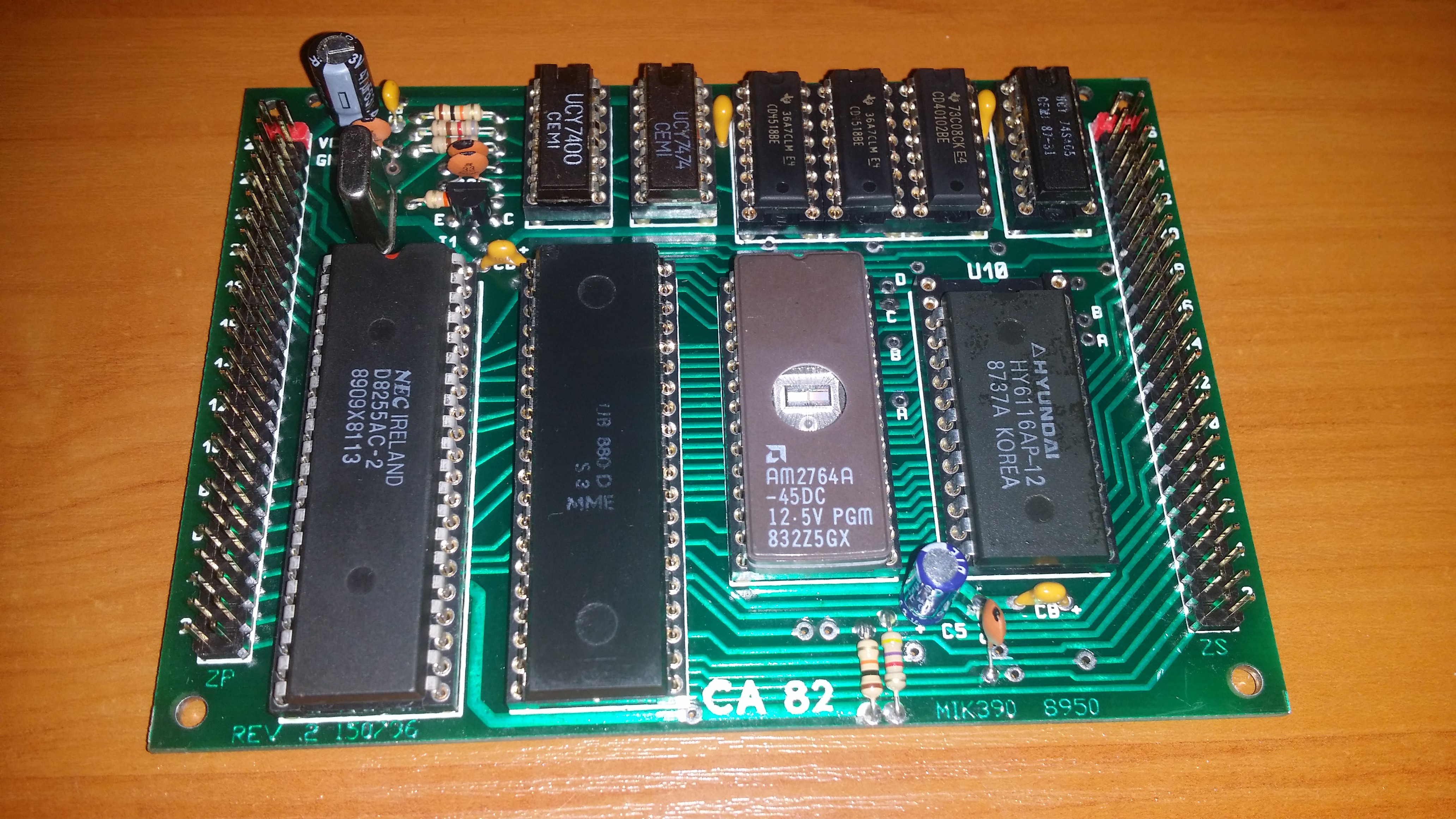As a young maker growing up in Poland during 1990s I was well aware of MIK CA80s existence. The device was often mentioned in hobbyists magazines I subscribed back then. Unfortunately I never had an opportunity to actually own one or at least use it for a while. To be honest, being a kid I would not be able do learn how to use it anyway. But some time ago, while casually going through offers posted on Polish auction site I've found a main PCB and small set of logic chips - merely a small part of what you need to build working replica. Feeling sense of nostalgia growing in me, I've bought them right away.
Then I began to look for other parts. Yes, I could simply use modern CMOS elements, easily buying them on the Internet, but I decided to use as many "historically accurate" parts as possibile. So instead Z80 CPU I bought a clone manufacture in East Germany, the 8255s were replaced by Soviet counterparts and TTLs were manufactured in Poland during 1980s.
While working on that project I discovered that there is a small community of people building replicas of CA80 in Poland. One of them was kind enough to provide his own design for missing keyboard/display board, saving time I initially intended to spend on designing it myself.
Computer is near from being complete. Now I only need to design power supply and proper enclosure. Probably I will use it with an old Polish cassette recorder, as it was intended by the original creator. :)
While looking for parts I needed to complete this project I came across a pleasant surprise. Someone was selling an original PCB for even more rare artifact - CA82. If CA80 was the Polish Raspberry Pi of the eighties and nineties, then CA82 can be considered its "Zero" version. It was smaller board, designed to be used in embedded DIY projects. Of course it didn't get much of an attention due to increasing popularity of microcontrollers. But for me it was an interesting side-project to build it.

 Marek Więcek
Marek Więcek

Translated the introduction text and the board had some rather advanced features for its time, including "in the background" programs. Wow!